This exceptional French Empire/Charles X mantle clock, crafted circa 1825, stands as a testament to the highest standards of bronze casting, chasing, and gilding of its era. The clock vividly portrays a key moment from Roman mythology: Faustulus, the shepherd, discovering the infant twins Romulus and Remus, who are being suckled by the she-wolf, Lupa. The partially clad figure of Faustulus is cast in patinated bronze, leaning into a rocky outcrop, his gaze directed at the she-wolf and the twin boys. The scene captures the mythological significance of this discovery, symbolizing the founding of Rome. The figures are meticulously cast in patinated bronze, adding depth and realism to the scene. This intricate composition rests on a rectangular griotte marble base, which is richly adorned with gilded bronze moldings. The two front feet of the base are designed as lion heads, nestled among fascia and cornucopia, symbolizing strength and abundance. The front of the base features a large gilded bronze plaque, intricately detailed with symbols of imperial Rome, including armor, spears, fascia, and incense burners, further emphasizing the clock's connection to Roman history and mythology. The clock's dial, a white enamel face with Roman numerals, is elegantly housed within the rocky outcrop on which Faustulus stands. It is encased in a gilded bronze bezel, adding a touch of sophistication. The timepiece features a silk string suspension movement that rings the hours and halves on a bell, ensuring both aesthetic and functional excellence. Mythological Context: In Roman mythology, Faustulus was the shepherd who discovered the infant twins Romulus and Remus along the banks of the Tiber River. The twins, who were being nurtured by the she-wolf Lupa, were taken in by Faustulus and his wife, Acca Larentia. They raised the boys as their own, and Romulus would later go on to found the city of Rome after the tragic death of his brother Remus. Specifications: Material: Patinated bronze figures, gilded bronze moldings, griotte marble base. Dial: White enamel with Roman numerals, gilded bronze bezel. Movement: Silk string suspension, ringing the hours and halves on a bell. Dimensions: 75 x 60 x 23 cm. Origin: France, circa 1825. This rare and exquisitely crafted Empire clock not only serves as a functional timepiece but also as a historical artifact, embodying the rich legacy of Roman mythology and the artistic prowess of the French Empire period.
Questa eccezionale pendola da camino dell'Impero francese/Carles X, realizzata nel 1825 circa, è una testimonianza dei più alti standard di fusione, cesellatura e doratura del bronzo dell'epoca. L'orologio raffigura in modo vivido un momento chiave della mitologia romana: Faustolo, il pastore, scopre i gemelli Romolo e Remo, allattati dalla lupa. La figura parzialmente vestita di Faustolo è fusa in bronzo patinato, appoggiata a uno sperone di roccia, con lo sguardo rivolto alla lupa e ai due gemelli. La scena cattura il significato mitologico di questa scoperta, che simboleggia la fondazione di Roma. Le figure sono fuse meticolosamente in bronzo patinato, aggiungendo profondità e realismo alla scena. Questa intricata composizione poggia su una base rettangolare in marmo griotte, riccamente ornata da modanature in bronzo dorato. I due piedi anteriori della base sono disegnati come teste di leone, incastonate tra fasce e cornucopie, che simboleggiano forza e abbondanza. La parte anteriore della base presenta una grande placca in bronzo dorato, intricata e dettagliata con i simboli della Roma imperiale, tra cui armature, lance, fasce e incensieri, sottolineando ulteriormente il legame dell'orologio con la storia e la mitologia romana. Il quadrante dell'orologio, un quadrante in smalto bianco con numeri romani, è elegantemente alloggiato all'interno dello sperone roccioso su cui si trova Faustulus. Il quadrante è racchiuso in una lunetta in bronzo dorato che aggiunge un tocco di raffinatezza. Il segnatempo è dotato di un movimento con sospensione a corde di seta che fa suonare le ore e le mezze su una campana, garantendo l'eccellenza estetica e funzionale. Contesto mitologico: Nella mitologia romana, Faustulus era il pastore che scoprì i gemelli Romolo e Remo lungo le rive del Tevere. I gemelli, nutriti dalla lupa Lupa, furono accolti da Faustolo e da sua moglie, Acca Larentia. Romolo fonderà la città di Roma dopo la tragica morte del fratello Remo. Specifiche: Materiale: Figure in bronzo patinato, modanature in bronzo dorato, base in marmo grigliato. Quadrante: smalto bianco con numeri romani, lunetta in bronzo dorato. Movimento: Sospensione a corde di seta, che suona le ore e le mezze su una campana. Dimensioni: 75 x 60 x 23 cm. Origine: Francia, 1825 circa. Questo orologio dell'Impero, raro e di squisita fattura, non è solo un orologio funzionale, ma anche un manufatto storico che incarna la ricca eredità della mitologia romana e l'abilità artistica del periodo dell'Impero francese.


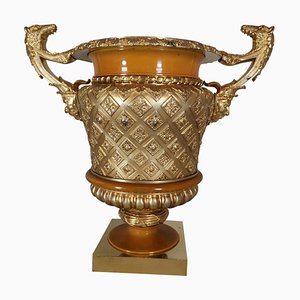
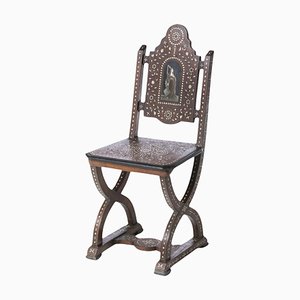

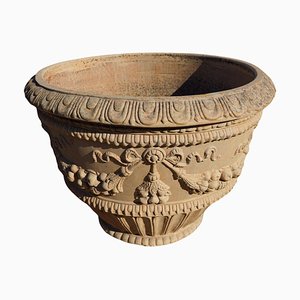
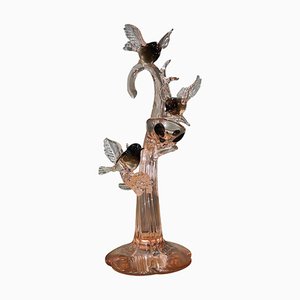

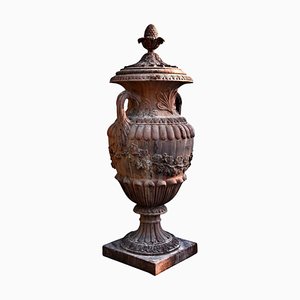
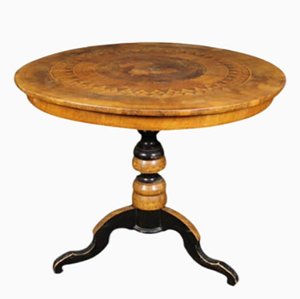

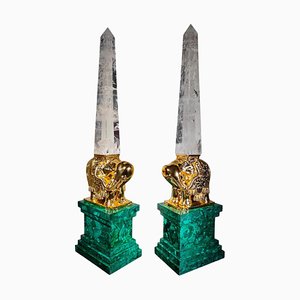
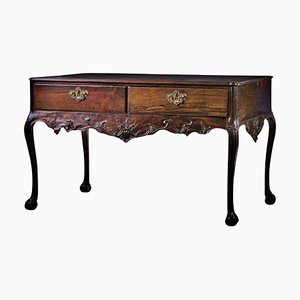
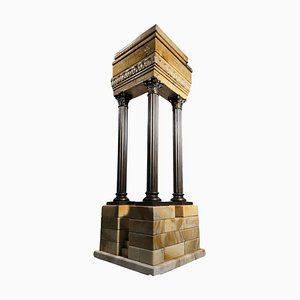
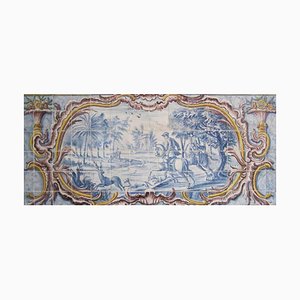
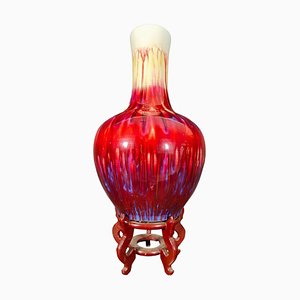

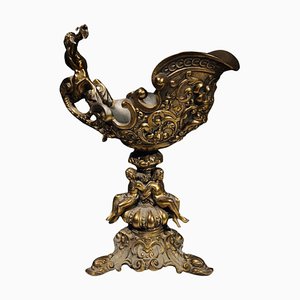
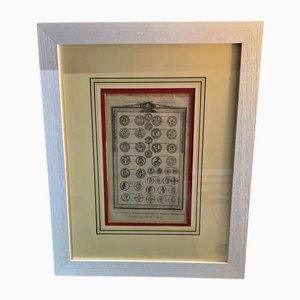
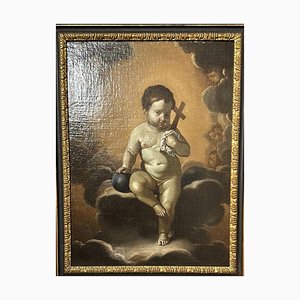
Contattaci
Fai un'offerta
Abbiamo notato che sei nuovo su Pamono!
Accetta i Termini e condizioni e l'Informativa sulla privacy
Contattaci
Fai un'offerta
Ci siamo quasi!
Per seguire la conversazione sulla piattaforma, si prega di completare la registrazione. Per procedere con la tua offerta sulla piattaforma, ti preghiamo di completare la registrazione.Successo
Grazie per la vostra richiesta, qualcuno del nostro team vi contatterà a breve.
Se sei un professionista del design, fai domanda qui per i vantaggi del Programma Commerciale di Pamono